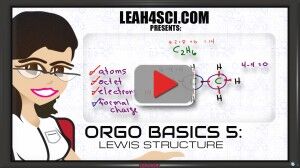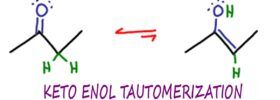 Orgo Basics Video Series: Video 5
Orgo Basics Video Series: Video 5
Lewis structures provide you with a simple way to draw out an organic molecule showing every atom, bond, and lone electron pair.
While not ideal for demonstrating bond angle and molecular geometry, it's a great way to begin your understanding of molecules and bonding in organic chemistry.
Every professor will show a different set of ‘rules' for coming up with a correct structure. I find each one to be more confusing than the next. The video below teaches you my trick to ensure you are on the right track to drawing the most appropriate Lewis Structure for a given molecular formula.
Are all these drawings making Orgo feel a bit like an art class? Read Organic Chemistry or Art Class?
(Watch on YouTube: Lewis Structure. Click cc on bottom right for video transcription.)
<– Watch Previous Video: Formal Charge Formula Shortcut for Organic Compounds
–> Watch Next Video: Resonance Structures Organic Chemistry Tutorial



How are 4 electrons making up for the π bond ?
Reference-C2H4 in the above video.
Nitrogen is more electronegative than carbon, so I’ve made mistake that Nitrogen has -1 formal charge and Carbon has no charge in Cyanide (CN-).
Your lecture helps me to understand why filling octet rules is prior to formal charges. Thank you!
can you explain why you used oxygen on the right in the PO43- molecule. I just wanted to understand the resonance of electrons in this molecule
When you have a molecule like CH3NH(CH2)2CH3 for example, how do you know which atom to start building around or start with in general? Thank you.
:::F-:N=O::
and
8 – group number = # of covalent bonds (as a shortcut)
for N
8 – 5 = 3 covalent bonds
8 – 6 = 2 covalent bonds for oxygen
8 – 7 = 1 covalent bonds for flourine
these are my thoughts
Here you add extra electrons to atoms than they have in their valance shell.
Like, you showed 6 e- to Nitrogen (in CN-) and a bond as well i.e. total of 7 electrons but Nitrogen only has 5 electrons in its valance shell and only valance shell electrons take part in reactions. Please explain.
First complete the octet, then remove. CN- has extra electrons due to the negative charge but N has 3 touching (triple bond) and one lone pair for a total of 5 valence